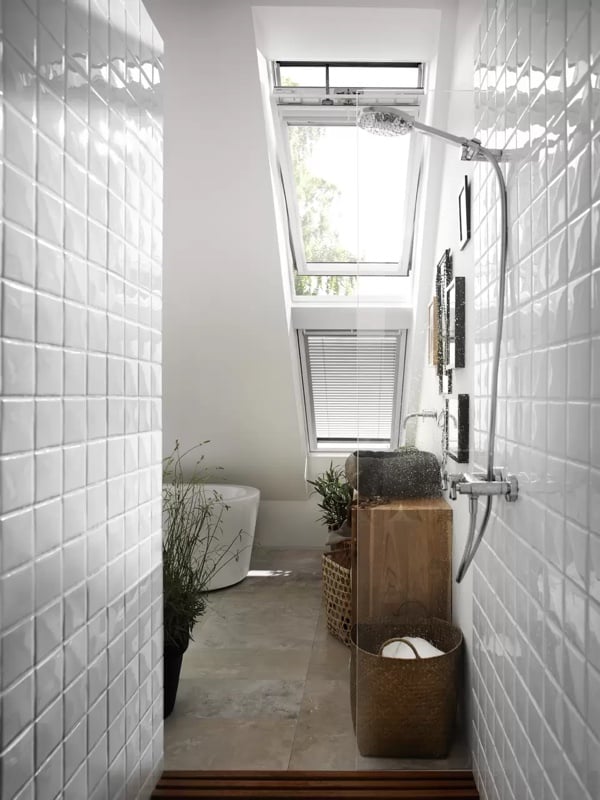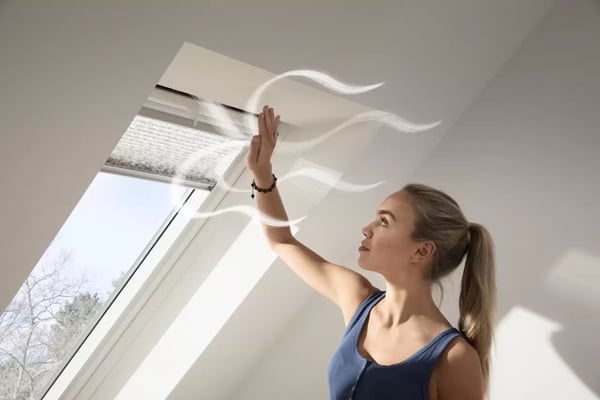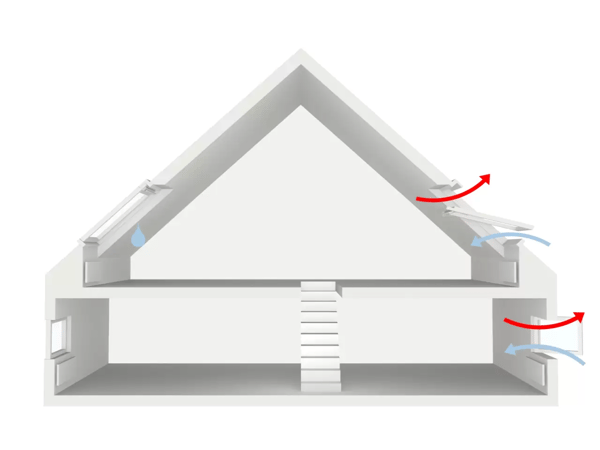Are your roof windows all steamed up this winter? Here's how to avoid condensation building up in your home.
Why does condensation form?
Condensation occurs mainly in winter when hot air inside houses finds cold surfaces, such as window glass or a poorly insulated wall.
The water produced by cooling air turns into condensate and settles on surfaces like windows.
Cooking, showering and drying clothes at home are among the most common culprits in the production of humidity and when combined with poor ventilation, they can increase condensation.
Due to their position, roof windows are more prone to condensation: warm air rises upwards and finds the glass of roof windows, which are the ones most exposed to rain, wind, ice and snow.
To maintain optimal air quality, it is therefore necessary to ventilate and heat correctly.

How to avoid condensation
To obtain an optimal climate in winter, the relative humidity of the air should be around 40 - 50%.
To avoid the formation of humidity follow these simple rules:
- When cooking or showering, close the door to keep the air moist inside the room. Then open the windows to disperse the humidity and only then open the door.
- Avoid using humidifiers on radiators. They’re not necessary in modern homes.
- If you need to dry clothes inside the house, use a closed room and let it air as soon as you can.

How to get rid of condensation
If condensation is present, the only effective way to eliminate it is to adequately ventilate the rooms.
To get good ventilation, open all windows 5 times a day for 5 - 10 minutes to create cross ventilation. This allows a complete exchange of air without cooling the premises.

Roof windows are perfect for what’s known as the stack effect: hot and humid air comes out of the top windows while fresh air comes in from the windows below.
Don’t ventilate with the heating on: opening the windows releases the heated air with consequent energy consumption. In addition, the area near the window cools down, and the warm indoor air can lead to condensation even faster.